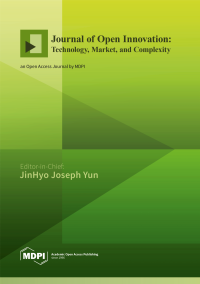Despite pervasiveness of the market forces and supplementary role of the state and in some cases, even civil society organisations, there are unmet social needs which remain unaddressed by the existing institutions. With industrial growth becoming jobless, the need for new models of
[...] Read more.
Despite pervasiveness of the market forces and supplementary role of the state and in some cases, even civil society organisations, there are unmet social needs which remain unaddressed by the existing institutions. With industrial growth becoming jobless, the need for new models of social innovation is being felt all around the world to provide jobs to the youth, skills for the new economy and entrepreneurial opportunities for transforming resources and skills. The persistence of some of these unmet needs (also referred as wicked problems sometimes) or unaddressed problems for a long time shows that the existing institutional arrangements are inadequate for the purpose. Innovations are imperative. A socio-ecological system that recognizes and rewards innovation can withstand many external shocks, provided it is agile and innovates quickly to remain responsive to emergent challenges (Anderies, Janssen, & Ostrom. Ecology and society, 9(1)2004). Whether corporations will follow an open innovation approach to blend grassroots ideas and innovations with their expertise in a reciprocal, responsible and respectful manner (Gupta et al., Journal of Open Innovation: Technology, Market, and Complexity 2: 16, 2016) is still an open question. The design of appropriatemanufacturing and frugal supply chain will then become closely linked with other features of open innovation ecosystem. The debate on the role of social innovation in multi-stakeholder context in European focused on how these innovations fostered trust among different actors and influenced policy (Defourny and Nyssens. Social Enterprise Journal 4: 202–228, 2008). In this paper, we describe the market and social forces which influence the emergence of social innovations through various processes. We then look into the evolutionary pathways for social innovations (Mulgan, Innovations 1: 145–162, 2006), to avoid inertia and spur initiatives to bridge the social gap in an inclusive manner through mobilization of youth in particular. The ecosystem for social open innovations provides scope for connecting corporations and communities (Herrera, 2015; Gibson-Graham and Roelvink, Social innovation for community economies: how, 2013). Following the theory of reciprocal and responsible open innovation systems (Gupta et al., Journal of Open Innovation: Technology, Market, and Complexity 2: 16, 2016), we explore the way barriers are overcome on the way to reach the base of economic pyramid [BOEP] customer. Technological adaptability and institutional or market adaptability are explored to understand how communities get empowered to deal with corporations through an open innovation platform. The corporations need to be empowered to understand the decision heuristics followed by grassroots and community frugal innovators (Gupta, Innovations 1: 49–66, 2006). Just as communities need to be empowered to negotiate fair and just exchange relationship with corporations (Honey Bee Network, 1990–2017). Finally, we conclude with the recommendations based on the experiences of grassroots innovators that can enrich both social innovations and social enterprises following commercial as well as social business models for meeting the unmet needs of the disadvantage section of the society.
Full article



